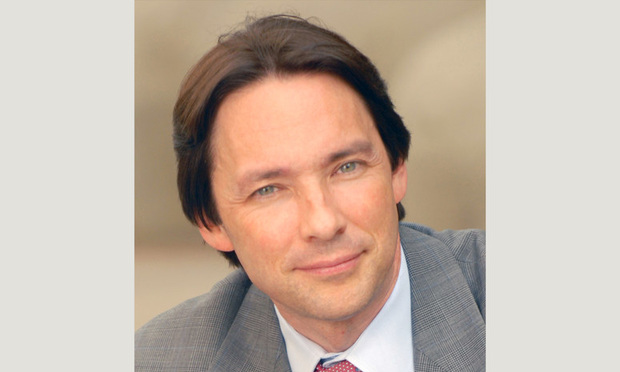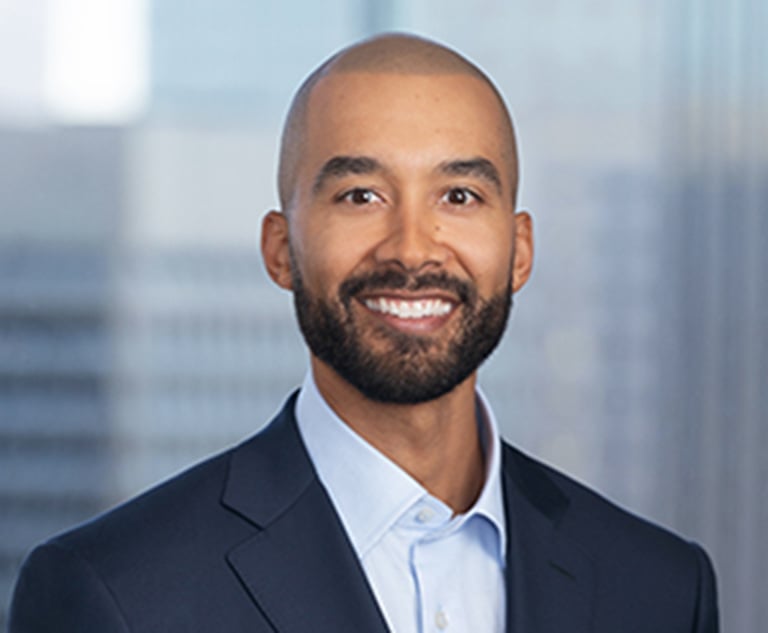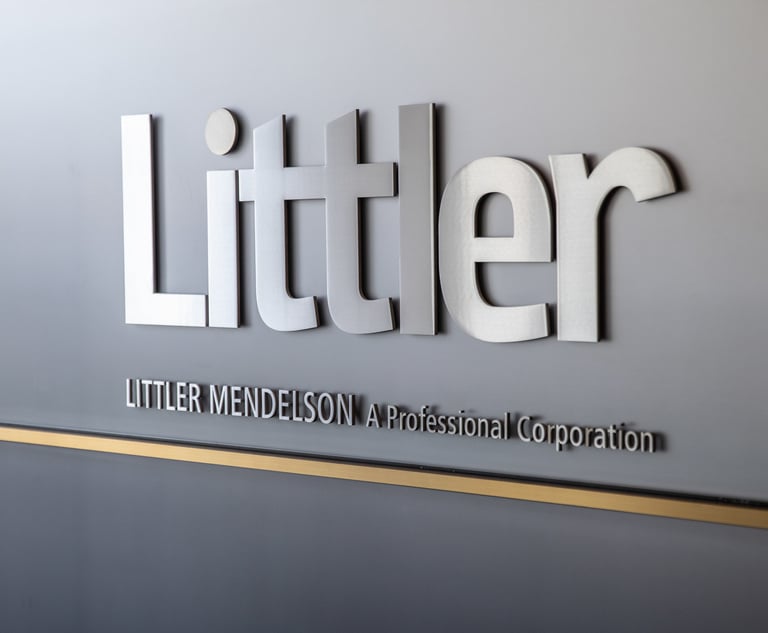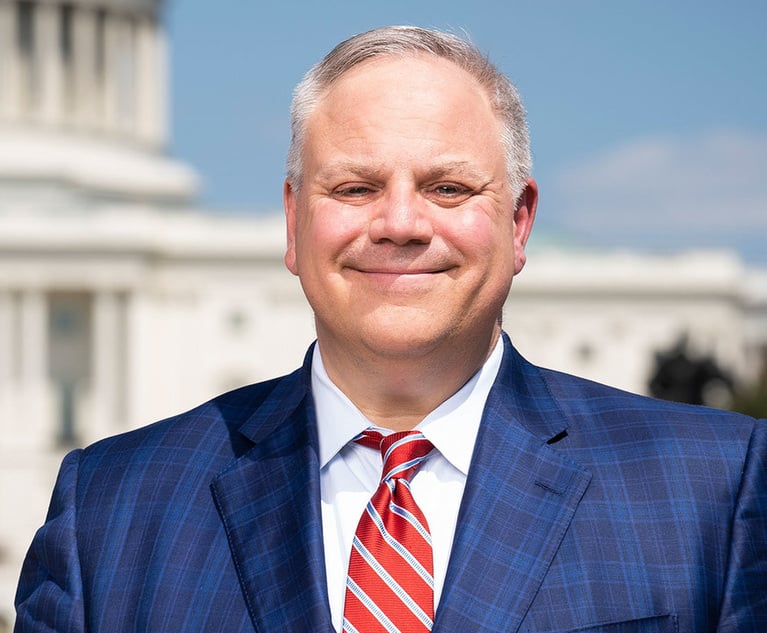Best Best & Krieger Reports Strong Revenue Growth
The firm, which specializes in the representation of governments and public agencies, prospered in FY 2018.
February 22, 2019 at 04:59 PM
3 minute read
 Eric Garner, managing partner of Best Best & Krieger/courtesy photo
Eric Garner, managing partner of Best Best & Krieger/courtesy photo
Best Best & Krieger (BB&K), a California-based law firm specializing in work for cities, counties, districts, and other public agencies, posted significant growth in revenue, profits, and lawyer head count in FY 2018 compared with the year before.
Gross revenue reached $91.5 million, an 8.9 percent increase over 2017's figure of $84 million. Revenue per lawyer climbed from $451,000 to $454,000, a 0.7 percent gain. Profits per equity partner rose from $393,000 to $398,000, a 1.3 percent increase.
All this growth occurred as the firm increased its lawyer head count. The total number of lawyers at the firm rose from 186 to 202. The new hires include eight attorneys who were previously with the boutique Manhattan Beach law firm Jenkins & Hogin. BB&K also gained three health care-focused attorneys when the California law firm Archer Norris closed its doors and filed for bankruptcy.
While the number of equity partners at Best was constant at 56, the law firm gained six nonequity partners, for a total of 47.
 Eric Garner, managing partner of the firm, attributes the strong figures partly to a post-downturn economy offering plentiful opportunities to serve municipal and other public clients in California and beyond.
Eric Garner, managing partner of the firm, attributes the strong figures partly to a post-downturn economy offering plentiful opportunities to serve municipal and other public clients in California and beyond.
“The growth has been organic, building on public agency demand and, to some extent, private business demand. There aren't too many law firms that do this type of work,” Garner said. “The primary competition is much smaller boutique firms. We have a greater breadth.”
Apart from its merger with the much smaller firm of Jenkins & Hogin, BB&K has not engaged in merger talks in the last few years, Garner said. Public agency work is, ultimately, a lower-rate type of legal service compared to the kinds of work for which Am Law 100 firms tend to bill $1,000 or $1,500 an hour, and a law firm specializing in public agency representations simply might not make enough money for some potential merger partners, Garner acknowledged.
In 2019 and beyond, the law firm aims to expand existing practice areas through lateral hires, but not at such a rate that the assimilation of lawyers into the firm's distinct culture will be sacrificed, Garner said.
“We have some conversations going on, and we hope there will be some further growth this year, but we don't want to grow too fast,” he said.
This content has been archived. It is available through our partners, LexisNexis® and Bloomberg Law.
To view this content, please continue to their sites.
Not a Lexis Subscriber?
Subscribe Now
Not a Bloomberg Law Subscriber?
Subscribe Now
NOT FOR REPRINT
© 2025 ALM Global, LLC, All Rights Reserved. Request academic re-use from www.copyright.com. All other uses, submit a request to [email protected]. For more information visit Asset & Logo Licensing.
You Might Like
View All

Three Akin Sports Lawyers Jump to Employment Firm Littler Mendelson

Brownstein Adds Former Interior Secretary, Offering 'Strategic Counsel' During New Trump Term
2 minute read
Trending Stories
- 1Pa. High Court: Concrete Proof Not Needed to Weigh Grounds for Preliminary Injunction Order
- 2'Something Else Is Coming': DOGE Established, but With Limited Scope
- 3Polsinelli Picks Up Corporate Health Care Partner From Greenberg Traurig in LA
- 4Kirkland Lands in Phila., but Rate Pressure May Limit the High-Flying Firm's Growth Prospects
- 5Davis Wright Tremaine Turns to Gen AI To Teach Its Associates Legal Writing
Who Got The Work
J. Brugh Lower of Gibbons has entered an appearance for industrial equipment supplier Devco Corporation in a pending trademark infringement lawsuit. The suit, accusing the defendant of selling knock-off Graco products, was filed Dec. 18 in New Jersey District Court by Rivkin Radler on behalf of Graco Inc. and Graco Minnesota. The case, assigned to U.S. District Judge Zahid N. Quraishi, is 3:24-cv-11294, Graco Inc. et al v. Devco Corporation.
Who Got The Work
Rebecca Maller-Stein and Kent A. Yalowitz of Arnold & Porter Kaye Scholer have entered their appearances for Hanaco Venture Capital and its executives, Lior Prosor and David Frankel, in a pending securities lawsuit. The action, filed on Dec. 24 in New York Southern District Court by Zell, Aron & Co. on behalf of Goldeneye Advisors, accuses the defendants of negligently and fraudulently managing the plaintiff's $1 million investment. The case, assigned to U.S. District Judge Vernon S. Broderick, is 1:24-cv-09918, Goldeneye Advisors, LLC v. Hanaco Venture Capital, Ltd. et al.
Who Got The Work
Attorneys from A&O Shearman has stepped in as defense counsel for Toronto-Dominion Bank and other defendants in a pending securities class action. The suit, filed Dec. 11 in New York Southern District Court by Bleichmar Fonti & Auld, accuses the defendants of concealing the bank's 'pervasive' deficiencies in regards to its compliance with the Bank Secrecy Act and the quality of its anti-money laundering controls. The case, assigned to U.S. District Judge Arun Subramanian, is 1:24-cv-09445, Gonzalez v. The Toronto-Dominion Bank et al.
Who Got The Work
Crown Castle International, a Pennsylvania company providing shared communications infrastructure, has turned to Luke D. Wolf of Gordon Rees Scully Mansukhani to fend off a pending breach-of-contract lawsuit. The court action, filed Nov. 25 in Michigan Eastern District Court by Hooper Hathaway PC on behalf of The Town Residences LLC, accuses Crown Castle of failing to transfer approximately $30,000 in utility payments from T-Mobile in breach of a roof-top lease and assignment agreement. The case, assigned to U.S. District Judge Susan K. Declercq, is 2:24-cv-13131, The Town Residences LLC v. T-Mobile US, Inc. et al.
Who Got The Work
Wilfred P. Coronato and Daniel M. Schwartz of McCarter & English have stepped in as defense counsel to Electrolux Home Products Inc. in a pending product liability lawsuit. The court action, filed Nov. 26 in New York Eastern District Court by Poulos Lopiccolo PC and Nagel Rice LLP on behalf of David Stern, alleges that the defendant's refrigerators’ drawers and shelving repeatedly break and fall apart within months after purchase. The case, assigned to U.S. District Judge Joan M. Azrack, is 2:24-cv-08204, Stern v. Electrolux Home Products, Inc.
Featured Firms
Law Offices of Gary Martin Hays & Associates, P.C.
(470) 294-1674
Law Offices of Mark E. Salomone
(857) 444-6468
Smith & Hassler
(713) 739-1250









